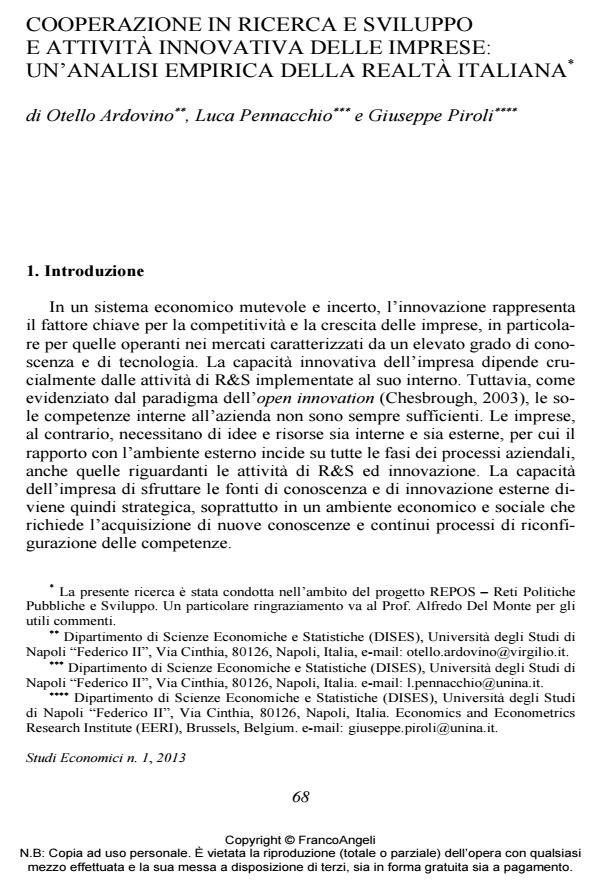Cooperazione in ricerca e sviluppo e attività innovativa delle imprese: un’analisi empirica della realtà italiana
Titolo Rivista STUDI ECONOMICI
Autori/Curatori Otello Ardovino, Luca Pennacchio, Giuseppe Piroli
Anno di pubblicazione 2014 Fascicolo 2013/109
Lingua Italiano Numero pagine 31 P. 68-98 Dimensione file 186 KB
DOI 10.3280/STE2013-109004
Il DOI è il codice a barre della proprietà intellettuale: per saperne di più
clicca qui
Qui sotto puoi vedere in anteprima la prima pagina di questo articolo.
Se questo articolo ti interessa, lo puoi acquistare (e scaricare in formato pdf) seguendo le facili indicazioni per acquistare il download credit. Acquista Download Credits per scaricare questo Articolo in formato PDF

FrancoAngeli è membro della Publishers International Linking Association, Inc (PILA)associazione indipendente e non profit per facilitare (attraverso i servizi tecnologici implementati da CrossRef.org) l’accesso degli studiosi ai contenuti digitali nelle pubblicazioni professionali e scientifiche
In recent decades firms have stepped up cooperation in R&D to improve their innovation capability by exploiting the external knowledge. Using data from the Community Innovation Survey, this paper analyzes the effect of cooperation on the propensity to innovate of Italian firms. Overall, the main results show that cooperation in research and development has a positive effect on this propensity. However, the effect varies according to the type of partner chosen by the firm. The greatest benefits derive from collaborations with non-competitive partners, such as suppliers and clients, but cooperation with competitors may also stimulate the firms’ innovation capabilities. Instead, cooperation with universities and other public research organizations shows a weak positive correlation with innovation propensity of firms. Size, R&D intensity, public support and internationalization also play an important role. The work takes into account the simultaneity and heterogeneity in firms’ innovation and collaboration strategies.
Parole chiave:R&D cooperation, innovation, partner selection, multivariate probit model, microeconometrics, community innovation survey
Jel codes:L13, O30, O32
- La collaborazione nel settore dell'artigianato artistico in Campania: il caso dell'oreficeria Alfredo Del Monte, Alessandro De Iudicibus, Sara Moccia, Luca Pennacchio, in STUDI ECONOMICI 117/2016 pp.77
DOI: 10.3280/STE2015-117005
Otello Ardovino, Luca Pennacchio, Giuseppe Piroli, Cooperazione in ricerca e sviluppo e attività innovativa delle imprese: un’analisi empirica della realtà italiana in "STUDI ECONOMICI " 109/2013, pp 68-98, DOI: 10.3280/STE2013-109004